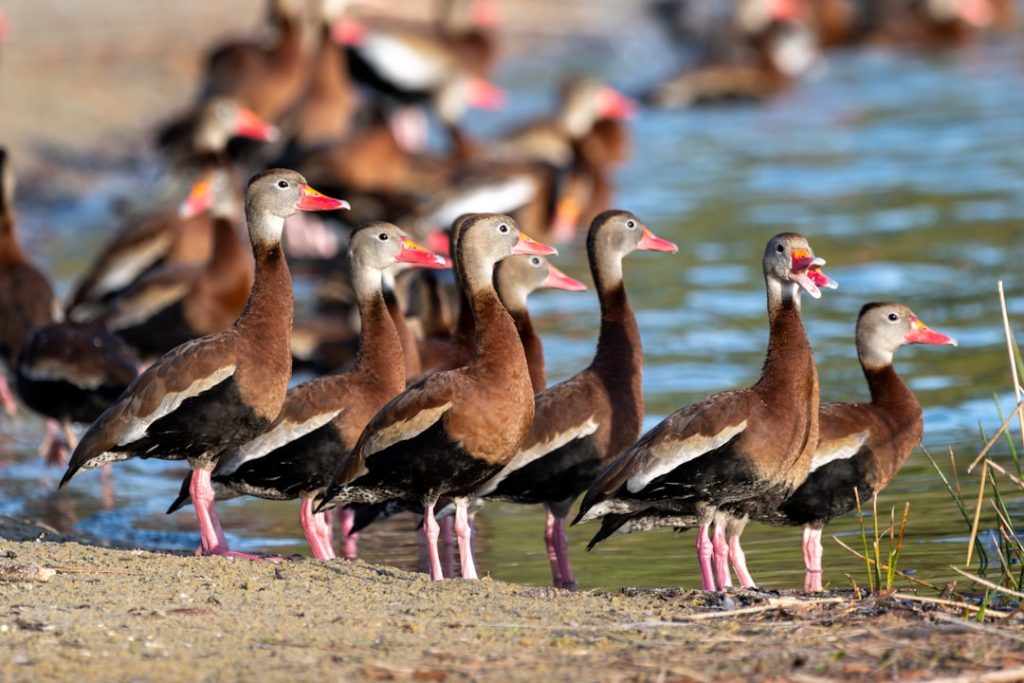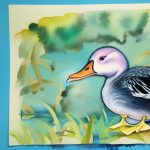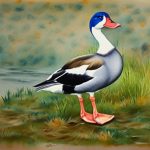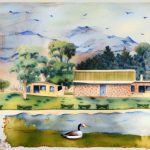Duck breeding grounds play a crucial role in the life cycle of ducks and other waterfowl species. These areas provide the necessary habitat for ducks to breed, nest, and raise their young. The availability of suitable breeding grounds directly impacts the population and distribution of ducks. Without adequate breeding grounds, duck populations can decline, leading to imbalances in ecosystems and potential loss of biodiversity.
Furthermore, duck breeding grounds are essential for maintaining healthy wetland ecosystems. Ducks play a vital role in wetland ecology by contributing to nutrient cycling, seed dispersal, and controlling insect populations. As such, the presence of ducks in wetlands can have a cascading effect on the overall health and functioning of these ecosystems. Additionally, duck breeding grounds are important for recreational and economic purposes. Many people enjoy birdwatching and hunting waterfowl, contributing to local economies and supporting conservation efforts. Therefore, the preservation and protection of duck breeding grounds are critical for both wildlife and human communities.
Table of Contents
Key Takeaways
- Duck breeding grounds are important for maintaining healthy duck populations and supporting biodiversity in wetland ecosystems.
- Ideal duck breeding grounds have shallow water, abundant vegetation, and minimal human disturbance to provide suitable nesting and feeding habitats for ducks.
- Threats to duck breeding grounds include habitat loss, pollution, climate change, and invasive species, which can disrupt the natural balance of wetland ecosystems.
- Conservation efforts for duck breeding grounds include habitat restoration, wetland protection, and sustainable management practices to ensure the long-term viability of duck populations.
- Wetlands play a crucial role in providing essential habitat for ducks to breed, feed, and raise their young, making them vital for the survival of duck populations.
- Human impact on duck breeding grounds through urban development, agriculture, and industrial activities continues to pose a significant threat to the future of these important ecosystems.
- The future of duck breeding grounds depends on effective conservation measures, sustainable land use practices, and global efforts to address the impacts of climate change on wetland ecosystems.
Characteristics of Ideal Duck Breeding Grounds
Ideal duck breeding grounds share several key characteristics that are essential for supporting successful breeding and nesting activities. Firstly, these areas should provide suitable nesting sites, such as dense vegetation or nesting structures, to protect eggs and young ducklings from predators. Additionally, ideal breeding grounds offer abundant food sources, including aquatic plants, invertebrates, and small fish, to support the nutritional needs of breeding ducks and their offspring.
Moreover, suitable water quality is crucial for duck breeding grounds, as it directly impacts the availability of food and the overall health of the ecosystem. Clean water free from pollutants ensures the survival of aquatic organisms that ducks rely on for sustenance. Furthermore, ideal breeding grounds offer a mix of open water and emergent vegetation to provide diverse habitats for different duck species. Lastly, these areas should have limited human disturbance to minimize disruptions to nesting activities and reduce stress on breeding ducks. Overall, ideal duck breeding grounds provide a balance of food, shelter, and safety to support successful breeding and contribute to healthy duck populations.
Threats to Duck Breeding Grounds
Despite their importance, duck breeding grounds face numerous threats that jeopardize their ability to support healthy duck populations. Habitat loss and degradation are among the most significant threats to duck breeding grounds. Wetland drainage, urban development, agriculture expansion, and pollution have all contributed to the loss of critical breeding habitats for ducks. Additionally, invasive species can outcompete native vegetation and alter the structure and function of wetland ecosystems, further impacting the availability of suitable breeding grounds.
Furthermore, climate change poses a significant threat to duck breeding grounds. Rising temperatures, altered precipitation patterns, and sea-level rise can lead to changes in wetland habitats, affecting the availability of suitable breeding grounds for ducks. Human disturbance, including recreational activities, hunting pressure, and disturbance from domestic animals, can also disrupt nesting activities and cause stress to breeding ducks. Lastly, pollution from agricultural runoff, industrial activities, and urban areas can degrade water quality in breeding grounds, impacting the availability of food and the overall health of wetland ecosystems.
Conservation Efforts for Duck Breeding Grounds
Conservation efforts for duck breeding grounds are essential to ensure the long-term viability of duck populations and the health of wetland ecosystems. One of the primary conservation strategies is the protection and restoration of critical wetland habitats. This includes acquiring and managing protected areas for waterfowl conservation, implementing habitat restoration projects, and establishing conservation easements to safeguard important breeding grounds from development.
Additionally, habitat management practices such as controlled burns, water level manipulation, and invasive species control can help maintain suitable breeding habitats for ducks. Conservation organizations also work to engage local communities in conservation efforts through education, outreach programs, and partnerships with landowners to promote sustainable land management practices that benefit duck breeding grounds.
Furthermore, hunting regulations and management play a crucial role in conserving duck breeding grounds. Sustainable hunting practices, including bag limits, hunting seasons, and habitat stamp programs, help regulate hunting pressure and ensure the long-term sustainability of waterfowl populations. Lastly, research and monitoring efforts are essential for understanding the status of duck breeding grounds and identifying priority areas for conservation action.
Role of Wetlands in Duck Breeding
Wetlands play a critical role in supporting duck breeding activities and are essential habitats for many waterfowl species. These diverse ecosystems provide a range of habitats that are well-suited for nesting, feeding, and raising young ducks. Wetlands offer abundant food sources such as aquatic plants, invertebrates, and small fish that are essential for meeting the nutritional needs of breeding ducks and their offspring.
Moreover, wetlands provide suitable nesting sites with dense vegetation or nesting structures that offer protection from predators. The complex structure of wetlands also provides cover and shelter for ducks during nesting and brood-rearing periods. Additionally, wetlands contribute to water quality by filtering pollutants and maintaining healthy aquatic ecosystems that support the food web for ducks.
Furthermore, wetlands play a crucial role in providing connectivity for migratory waterfowl by serving as stopover sites during migration. These areas offer resting and feeding opportunities for ducks as they travel between breeding and wintering grounds. Overall, wetlands are vital for supporting the life cycle of ducks and are essential for maintaining healthy waterfowl populations.
Human Impact on Duck Breeding Grounds

Human activities have had a significant impact on duck breeding grounds, leading to habitat loss, degradation, and disruptions to nesting activities. Wetland drainage for agriculture, urban development, and infrastructure projects has resulted in the loss of critical breeding habitats for ducks. Additionally, pollution from agricultural runoff, industrial activities, and urban areas has degraded water quality in breeding grounds, impacting the availability of food and the overall health of wetland ecosystems.
Furthermore, human disturbance from recreational activities such as boating, fishing, and hunting can disrupt nesting activities and cause stress to breeding ducks. Disturbance from domestic animals such as dogs can also impact nesting success by causing abandonment or predation of nests. Moreover, climate change driven by human activities has led to changes in wetland habitats that affect the availability of suitable breeding grounds for ducks.
Additionally, hunting pressure can impact duck populations if not managed sustainably. Overharvesting can lead to declines in waterfowl populations and impact the availability of suitable breeding grounds. Therefore, it is essential for human activities to be managed sustainably to minimize their impact on duck breeding grounds.
Future of Duck Breeding Grounds
The future of duck breeding grounds depends on concerted conservation efforts to address threats such as habitat loss, degradation, pollution, climate change, and human disturbance. Conservation organizations continue to work towards protecting and restoring critical wetland habitats to ensure the availability of suitable breeding grounds for ducks. This includes acquiring and managing protected areas for waterfowl conservation, implementing habitat restoration projects, engaging local communities in conservation efforts, and regulating hunting pressure through sustainable management practices.
Furthermore, addressing climate change through mitigation and adaptation strategies is crucial for maintaining suitable breeding habitats for ducks. This includes efforts to reduce greenhouse gas emissions, protect coastal wetlands from sea-level rise, and restore degraded habitats to enhance their resilience to climate change impacts.
Moreover, continued research and monitoring efforts are essential for understanding the status of duck breeding grounds and identifying priority areas for conservation action. By working together to address these challenges through collaborative conservation efforts, there is hope for the future of duck breeding grounds and the long-term sustainability of waterfowl populations. With continued dedication to conservation efforts, it is possible to ensure that duck breeding grounds remain healthy and productive for generations to come.
If you’re interested in creating the perfect environment for your duck breeding grounds, you might also want to consider how to insulate a chicken coop. Proper insulation can help regulate the temperature and provide a comfortable space for your ducks to thrive. Check out this helpful article on how to insulate a chicken coop for valuable tips and insights on creating an ideal living space for your poultry.
FAQs
What are duck breeding grounds?
Duck breeding grounds are areas where ducks choose to nest and raise their young. These areas are typically wetlands, marshes, or other bodies of water that provide suitable habitat for nesting and rearing ducklings.
Why are duck breeding grounds important?
Duck breeding grounds are important for the survival of duck populations. They provide a safe and suitable environment for ducks to lay their eggs, incubate them, and raise their young. These areas also contribute to the overall health of wetland ecosystems.
Where can duck breeding grounds be found?
Duck breeding grounds can be found in a variety of locations, including wetlands, marshes, ponds, lakes, and rivers. These areas are often characterized by abundant vegetation, shallow water, and a diverse array of aquatic and terrestrial habitats.
What factors contribute to the success of duck breeding grounds?
Several factors contribute to the success of duck breeding grounds, including the availability of suitable nesting sites, the presence of adequate food sources, and the absence of disturbances or predators that may threaten nesting ducks and their offspring.
How can duck breeding grounds be protected?
Duck breeding grounds can be protected through conservation efforts that focus on preserving and restoring wetland habitats, managing water levels, controlling invasive species, and minimizing human disturbances. Additionally, regulations and policies can be implemented to limit hunting and other activities that may disrupt breeding ducks.
Meet Walter, the feathered-friend fanatic of Florida! Nestled in the sunshine state, Walter struts through life with his feathered companions, clucking his way to happiness. With a coop that’s fancier than a five-star hotel, he’s the Don Juan of the chicken world. When he’s not teaching his hens to do the cha-cha, you’ll find him in a heated debate with his prized rooster, Sir Clucks-a-Lot. Walter’s poultry passion is no yolk; he’s the sunny-side-up guy you never knew you needed in your flock of friends!







